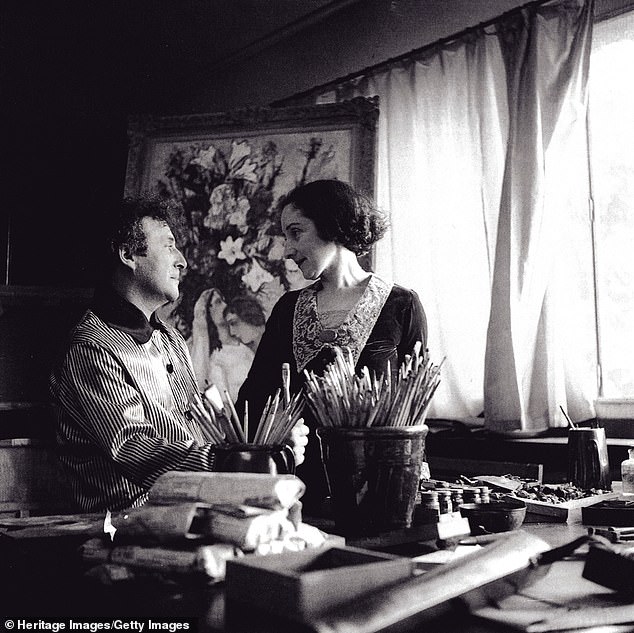What Art Can Tell Us About Love by Nick Trend (Laurence King £18.99, 208pp)

What Art Can Tell Us About Love is available now from the Mail Bookshop
What do we think was in the Mona Lisa’s heart when that subtle smile played on her lips? Might she have felt she had him in her power – and felt a spurt of triumph? Was the painter fascinated by another man’s wife? It wouldn’t be the first time…
Wisely, art historian Nick Trend doesn’t speculate about arguably the most famous painting in the world, but his suggestion that love influenced the world’s greatest artists is appealing – and he gives 70 examples. He asks, if ‘poems, novels, fairy tales and films unfold around a romance’, then why not art?
A painter’s partner can be a convenient model, and one who usefully comes free of charge.
So Rubens paints his second wife Helena, Rembrandt uncovers the sensuality of his maid and lover, Hendrickje Stoffels, and Marc Chagall’s beloved wife Bella floats through his dreamscapes.
Surprisingly, Trent leaves out Bonnard’s wife Marthe, who seems to have spent much time in the bath.
But the Dutch master Jan Steen paints his wife Margriet looking directly at him with the cheekiest of smiles and merry eyes that are surely inviting him to bed.

Dreamy: Marc Chagall and his wife Bella
Yet when love is complicated we may have to work harder to see beneath the surface of the paint. The Renaissance art historian Giorgio Vasari is tantalisingly honest when discussing Filippo Lippi, alive a century earlier. He, it seems, was ‘so lustful that he would give anything
to enjoy a woman he wanted if he thought he could have his way; and if he couldn’t buy what he wanted, then he would cool his passion by painting her portrait…’
Talking of such passions, Picasso painted his elegant wife Olga as poised and respectable in a Spanish dress, but when he grows tired of playing respectable husband and doting father, his images become brutal – and he turns his obsessive attention to the 17-year-old he saw on a Paris street when he was 45.
Marie Therese was his erotic muse for years – even after Picasso had found a new love, Dora Maar.
Trend structures his accessible and entertaining book according to degrees of complexity, from husband-and-wife ‘teams’ to illicit lovers and secret affairs to strange threesomes and unrequited passions.
His insights are always illuminating – for example, the way American artist Winslow Homer reveals his unrequited love for fellow artist Helena de Kay by painting her eyes unattainably cast down. Helen married and Homer lived alone for the rest of his life.
The real challenge for the art lover is to read a painting without knowing the artist’s biography. But Trent makes it huge fun to know all the gossip.







